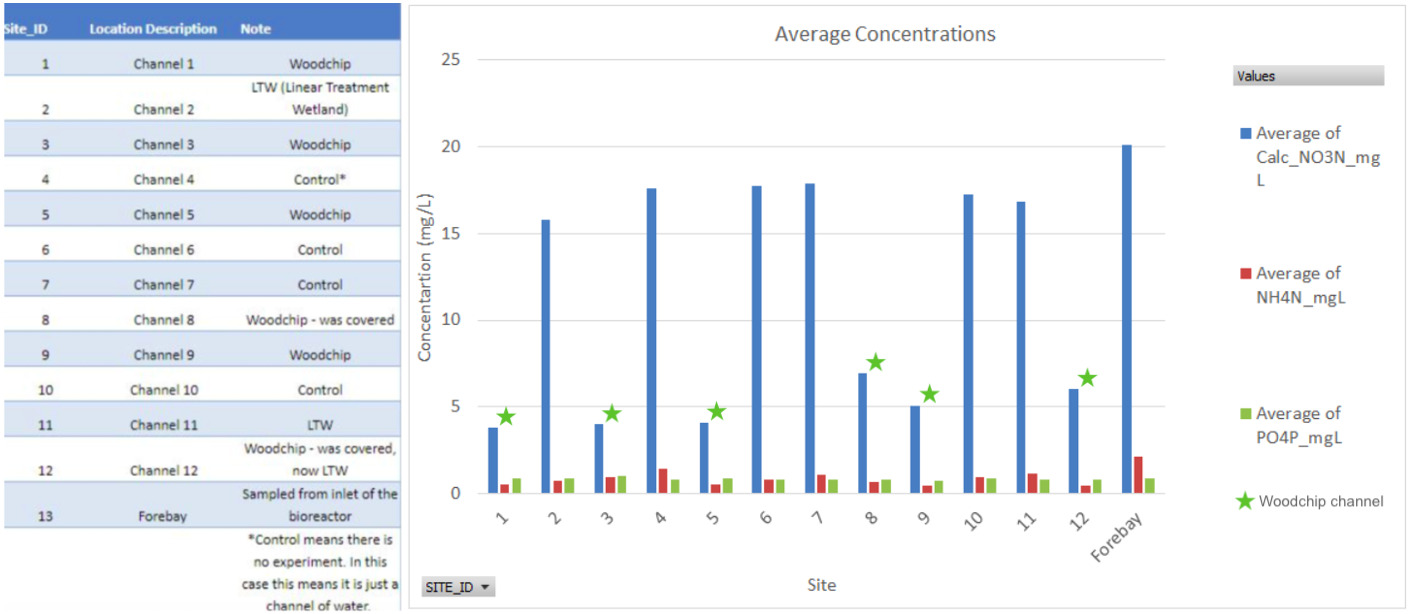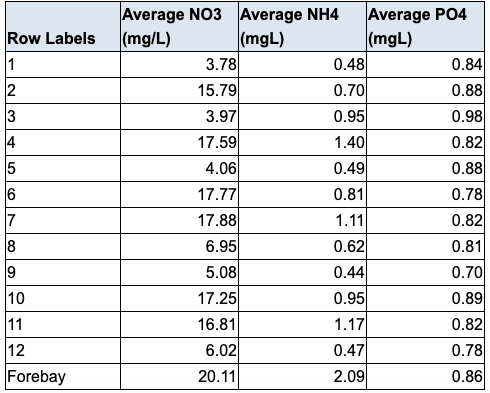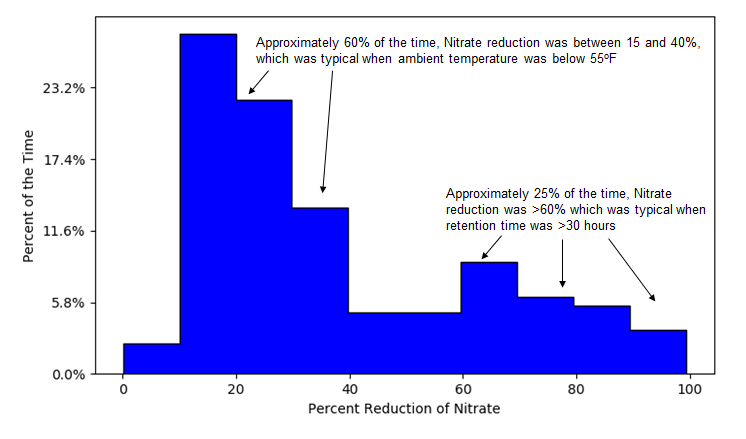Bioreactor Data
Experimental Multi-chamber Bioreactor
The bar graph below shows the average concentration (mg/L) of nitrate, phosphorous, and ammonia in the fore-bay and at the outlet of each of the 12 channels in the multi-chamber bioreactor. Before being treated in the bioreactor, agricultural water runoff is stored in the fore-bay. The water is then pumped from the fore-bay through the bioreactor in one of the 12 channels. Each of the 12 channels in the bioreactor have one of three experimental substrate types (woodchip, linear treatment wetland, or no treatment/control). Woodchip channels are marked with a star and show a lower average concentration of nitrate, phosphorus, and ammonia when compared with the pre-treated water of the fore-bay (far right).


Woodchip Bioreactor
The histogram below shows how often various rates of denitrification occurred in the woodchip channels of the Castroville Slough Bioreactor during our sample period. The higher denitrification rates (>60% nitrate reduction) occurred at times when HRT (Hydraulic Retention/Residence Time) was longer (>30 hours). Lower denitrification rates (15-40%) occurred more often through the sample period at 24-hour or less HRT and at cooler ambient temperatures. Therefore, we suggest that during periods of cooler temperatures a bioreactor's HRT should be longer than 24 hours (closer to 40 hours). In warmer temperatures, HRT could remain closer to 24 hours. It is also strongly recommended to maximize woodchip surface area by minimizing suspended sediment in the input water.


